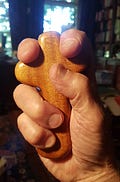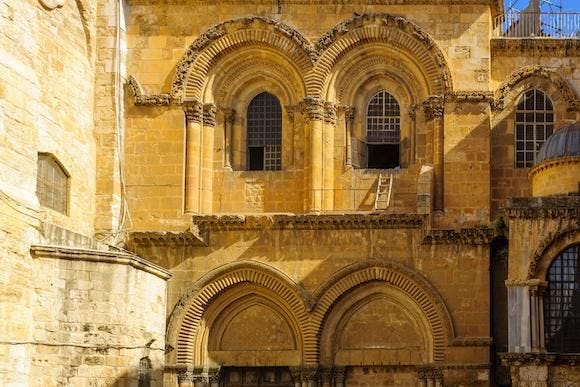Fair Jerusalem's bitter anniversary
On 7th October we look to the Old City's history of conflict , writes George Pitcher
Some 15 years ago, in the Old City of Jerusalem, a woman I didn’t know pressed a simple wooden clutching cross into my hand. It was in the Armenian Quarter, which vies with the Jewish Quarter, in my opinion, for the Old City’s best food. She didn’t want money, so perhaps it was just a spontaneous act of hospitality, a Johannine welcome in the spirit of “come and eat.”
We may look towards Jerusalem over coming days, as we approach 7th October, the dreadful first anniversary of the Hamas incursion into Israel, which claimed 1,139 lives and sparked the reprisal campaign in Gaza, which has cost tens of thousands more during the past 12 months.
And we might look to it instinctively as the modern capital of Israel, though Israel only declared it as such as recently as 1980 and Donald Trump, in his wisdom as US president, recognised it as the capital only in 2017.
But there’s something else about this bleak anniversary that turns our attention to Jerusalem. The less than one square kilometre that is the old walled city contains within it the historical print of religious conflict over thousands of years.
For Jews, it is the site of King Solomon’s holiest Temple Mount, built a millennium before the common era and sacked many times, most infamously by Babylonians, Romans and Crusaders. For Christians, it’s where their Nazarene took on the Jewish Temple authorities with his new covenant and the Roman Empire with his threat to temporal power, was executed and emerged triumphant in his Resurrection. So, then, quite an important place.
For Muslims, occupying the most populous quarter in the Old City, there is the historical claim to Temple Mount, with their mosque and Dome of the Rock, and the emblematic claim to Palestine’s statehood since the post-war establishment of modern Israel.
Microcosm of global tension
These quarters rub along – the Jewish, Christian, Armenian and Muslim – as a microcosm of global tension between the Abramic faiths. So it feels right to look to Jerusalem over coming days, as we’re forced to commemorate the most recent territorial, bloody conflict between two of these religions.
I’ve sought out my clutching cross; I’m not sure why. After the last 7th October, it feels like clutching at straws as much as it does holding the prince of peace close.
It’s not as if the Christian presence itself in the Old City is a shining example of unity in the pursuit of peace. We have two quarters, the principally global Catholic quarter and the Armenian (historically, Armenia was the first country formally to adopt Christianity). The quarrelling down the ages between these Christian factions could compete in its divisiveness with the issues between Muslim and Jew, but not quite.
Bitter historical rivalry
The Church of the Holy Sepulchre, the (probable) site of the crucifixion of Jesus, then known as Golgotha, is nonetheless a melting pot of bitter historical rivalry.
In one Christian quarter it may be, but six denominations share the basilica and are the wealthiest - Roman Catholic, Greek Orthodox and Armenian Orthodox. Syriac, Coptic and Ethiopian Orthodox have bit parts. Others, in that fraternal Christian way, were thrown out centuries ago. And Protestant churches are just too Johnny-come-lately to get a look-in.
Immovable ladder
I may have been made alert to Armenians by the sudden gift of the clutching cross, but at the Holy Sepulchre I’m sure I was told that the Immovable Ladder, the short steps at a window that have been there since the 18th century, was the only way for Armenian priests to enter. I can’t trace that story, but the ladder is a strange little symbol of transcending Christian divisions.
These divisions remain what Jerusalem is about. There is a tendency to romanticise the city in the West. The cradle of Christ might be at Bethlehem, but here is the birth of the faith. A lesser known traditional English hymn has as it’s first verse:
O fair, O fair Jerusalem,
When shall I come to thee?
When shall my sorrows have an end,
Thy joy that I may see?
But can this really be where sorrows cease and joy begins? Yes, in a theological sense. But less so in our historical experience. The Christ who was executed here prophesied that not one stone of the Temple would be left standing on another. On that, he would soon after be vindicated. And today, as again he foretold, the women of Jerusalem weep not for him but for themselves.
Bitterly divided, the city stands as a monument to human folly and misery. So what do we do as our eyes turn to Jerusalem ahead of 7th October? Well, we pray. But then everyone prays in Jerusalem.
For Christians, it’s probably a case of just remembering what the Old City did to the Christ – and clutching the cross we’ve so unexpectedly been gifted.
George Pitcher is a visiting fellow at the LSE and an Anglican priest




